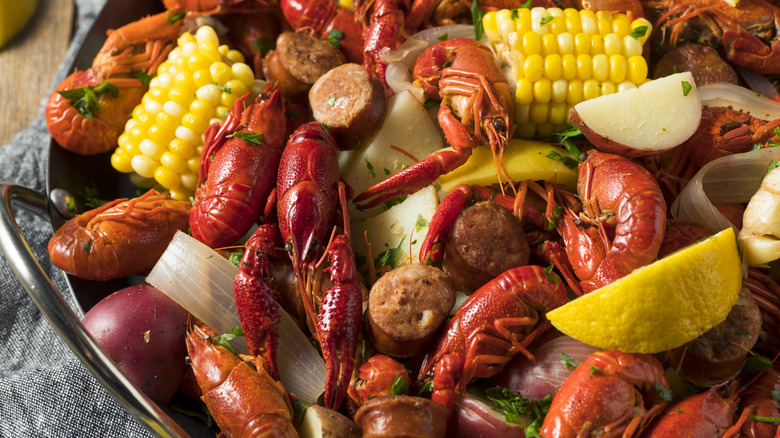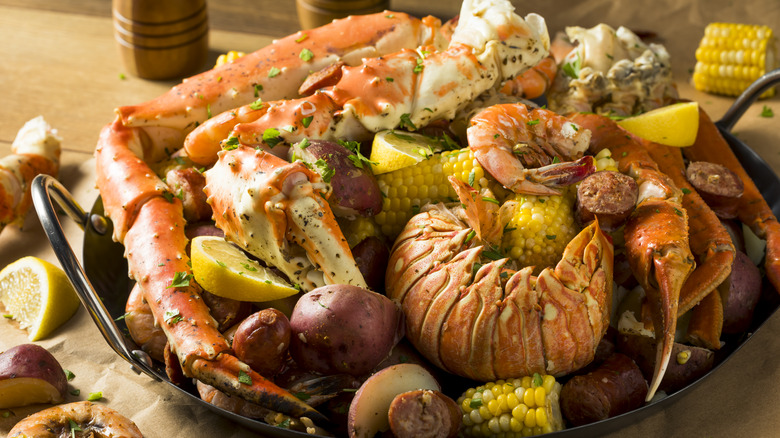The Important Step You Can't Skip With Your Seafood Boil
Whether it's the hot and spicy crawfish boils of Louisiana or the balmy shrimp boils from the coastal Carolina Lowcountry, a proper American seafood boil is one of the tastiest ways to enjoy the sea's rich bounty. To make a seafood boil, a heap of sea stock — normally crawfish, shrimp, lobster, or clams — is placed in a large pot filled with corn, sausage, potatoes, and other aromatics. Boiled together, the flavor from these ingredients is released into the savory broth, and they all begin to take on a similar wonderful flavor. Still, all of this flavor is a non-starter if you skip one crucial step: seasoning the water of your boil.
Unlike other dishes where you can season the exterior of the protein, the shell-protected crustaceans featured in a boil can't be seasoned that way. Instead, the water it's boiled in has to get the dose of seasoning, whether it's a simple salt and pepper or a complex 15-ingredient spice blend. As it boils, the seasoning is able to penetrate the shell and add a good dose of flavoring to both the seafood and the boiled accompaniments. So, what kind of seasoning should you be adding to your water?
Seasoning the water
Well, it depends on what type of seafood boil you're looking to make. You'll go heavy on the spicier seasonings for a true-blue Cajun crawfish boil. Grab cayenne and red pepper flakes and blend them with several classic spices, like paprika, garlic, oregano, thyme, and bay leaves. Citrus zest, from lemon or oranges, is normally welcome as well.
If you prefer a Viet-Cajun-style boil, like the ones you can find in Houston, you'll add to your crawfish boil a garlic butter sauce punctuated with that classic cajun seasoning plus certain Vietnamese flavors, like ginger, lemongrass, scallions, and citrus. Leftover garlic butter should also coat the crawfish after the boil.
Finally, for a Lowcountry flavor, you'll dial back the spice a bit, preferring the savory and sweet tingle of allspice, cardamom, garlic paprika, mustard powder, dill, and celery salt instead. You will often find the punchy but relatively mild Old Bay seasoning, which is famously used for crab boils, at Lowcountry boils. But wherever you are, whatever seasoning method you select, it's vital to be generous with the amount you use, as you'll be flavoring a lot of food. You are not just boiling anything; you're bathing it in a sauce that these creatures' tender, sweet flesh will be pretty plain without.

